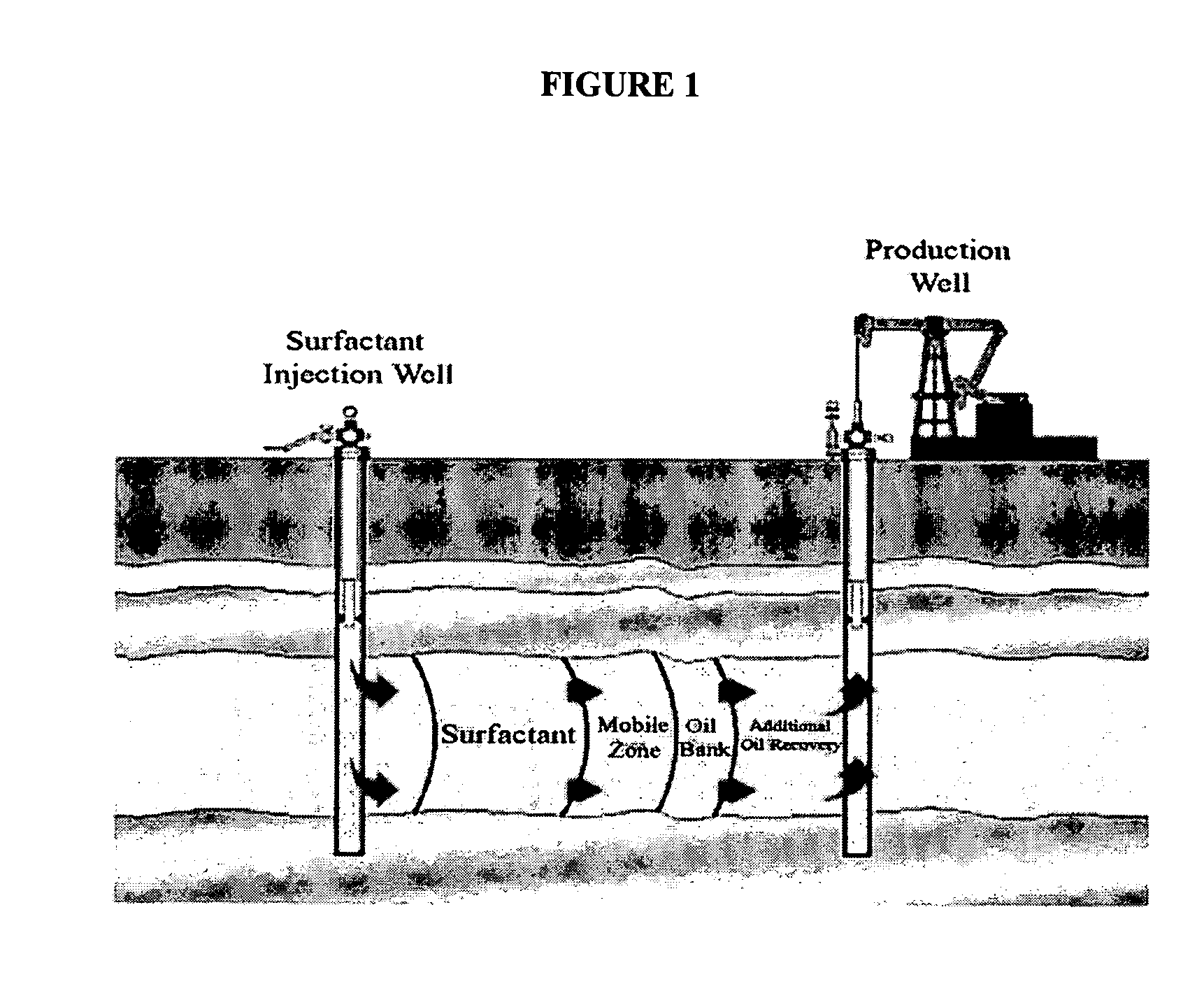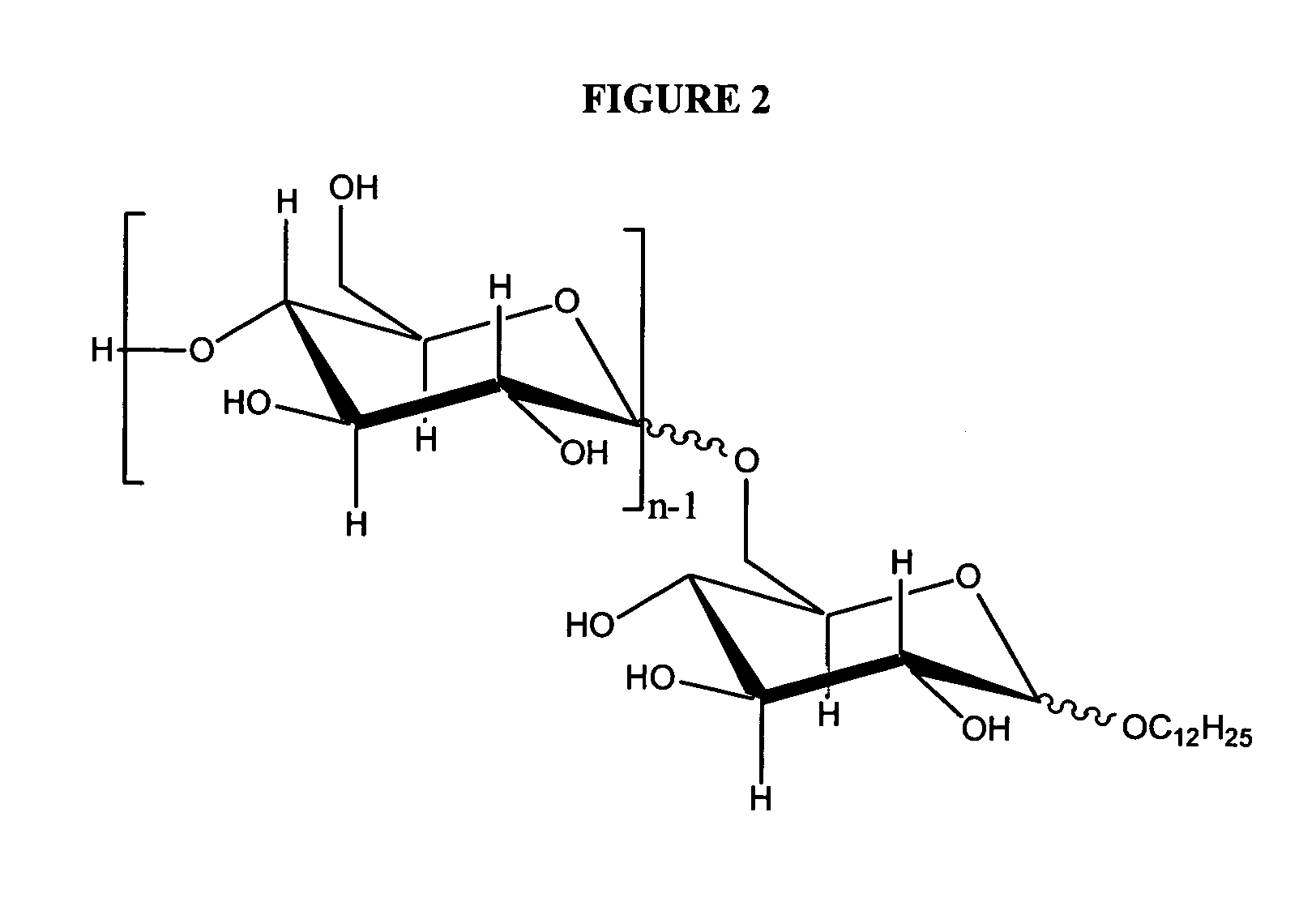Chemical system for improved oil recovery
a technology of oil recovery and chemical system, applied in the direction of detergent compositions, transportation and packaging, non-ionic surface active compounds, etc., can solve the problems of requiring additional oil extraction measures, large percentage of oil remains trapped in porous rock, and the ability to recover half of crude oil
- Summary
- Abstract
- Description
- Claims
- Application Information
AI Technical Summary
Benefits of technology
Problems solved by technology
Method used
Image
Examples
example 1
The Influence of Alcohol Co-surfactants on the Interfacial Tensions of Alkylpolyglucoside Surfactant Formulations vs. n-Octane
[0062] In this study alkyl polyglycosides (APG) surfactants were formulated with various alcohols as co-surfactants in aqueous salt solutions with the objective of identifying combinations that attain low interfacial tensions (IFT) versus n-octane.
[0063] Three different commercial APG products supplied by Cognis Corporation were used (Table 1).
TABLE 1Commercial APG Products Used in StudyAverageProductAlkyl ChainAverage nHLBActivityPG 20679.11.713.670%PG 206910.11.613.150%PG 206212.51.611.650%
[0064] The HLB (hydrophile-lipophile balance) of a surfactant refers to its behavior in creating emulsions and is related to its oil / water solubility. Higher HLB products, such as those found for these APG surfactants, indicate a higher degree of water solubility.
[0065] Several common alcohols were selected as co-solvents to create surfactant formulations with the AP...
example 2
Synergistic Effect of Alkyl Polyglycoside and Sorbitan Mixtures on Lowering Interfacial Tension and Enhancing Oil Recovery
[0078] The structure shown in FIG. 7a is one of the common Sorbitan surfactants considered in this investigation. FIG. 7b shows variations of the TWEEN product line of surfactants.
[0079] In this study, alkyl polyglycosides (APG) surfactants were formulated with various Sorbitan surfactants in aqueous salt solutions, with the objective that this mixture has a low interfacial tension (IFT) versus n-octane. Such aqueous surfactant formulations may be potential EOR candidates.
[0080] We included three different commercial APG products supplied by Cognis Corporation in this study (see Table 1). The Sorbitan SPAN and TWEEN surfactants, shown in Table 2 and Table 3, were supplied by Aldrich.
TABLE 2Sorbitan SPAN surfactants used in study.ProductAlkyl ChainAverage HLBSPAN 20C128.6SPAN 40C166.7SPAN 60C184.7SPAN 80C18 (one double4.3bond)SPAN 853 C18 (each has1.8double b...
example 3
The Influence of Alcohol Co-surfactants on the Interfacial Tensions of Alkylpolyglucoside Surfactant Formulations with Aromatic Alcohols
[0095] Aromatic alcohols were investigated for their potential to reduce the IFT between aqueous and hydrocarbon phases when included as a cosurfactant with APGs. Additional studies were carried out with 1-naphthol as the cosurfactant. It was found that 1 -naphthol, when added to an APG surfactant, created a low IFT, even at very low APG concentrations.
PUM
| Property | Measurement | Unit |
|---|---|---|
| surface tension | aaaaa | aaaaa |
| surface tension | aaaaa | aaaaa |
| temperatures | aaaaa | aaaaa |
Abstract
Description
Claims
Application Information
 Login to View More
Login to View More - R&D
- Intellectual Property
- Life Sciences
- Materials
- Tech Scout
- Unparalleled Data Quality
- Higher Quality Content
- 60% Fewer Hallucinations
Browse by: Latest US Patents, China's latest patents, Technical Efficacy Thesaurus, Application Domain, Technology Topic, Popular Technical Reports.
© 2025 PatSnap. All rights reserved.Legal|Privacy policy|Modern Slavery Act Transparency Statement|Sitemap|About US| Contact US: help@patsnap.com



